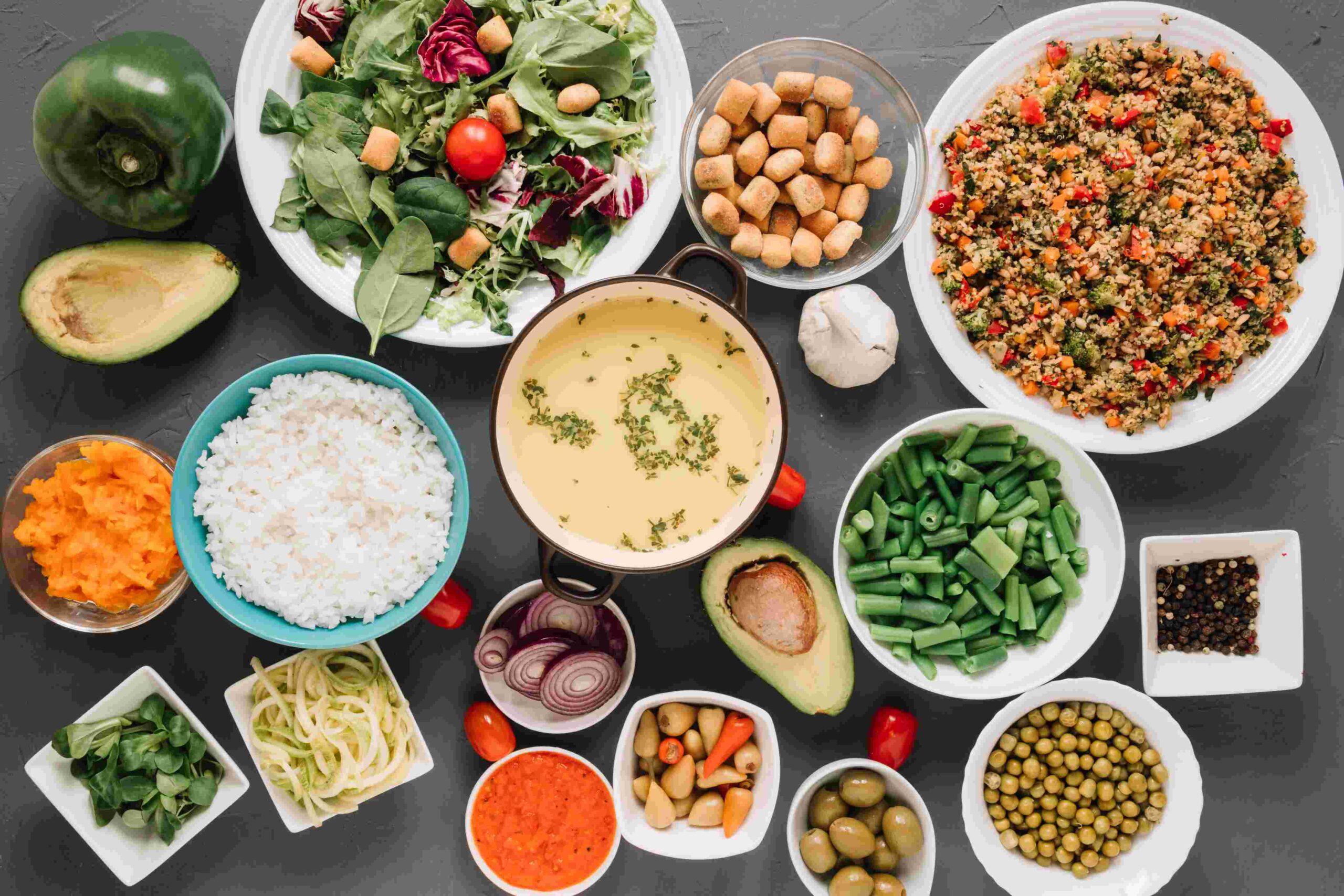Introduction: A Delicious Path to Health
The Ethiopian diet is more than just food, it’s a celebration of culture, community, and longevity. Known for its aromatic spices, plant-based dishes, and communal eating traditions, this diet is both flavorful and incredibly nutritious. With increasing global awareness around whole foods and plant-based lifestyles, many are turning to traditional cuisines like Ethiopia’s for inspiration and health benefits.
Rooted in centuries-old Orthodox Christian fasting practices and sustainable agriculture, the Ethiopian way of eating offers a balanced, fiber-rich, and antioxidant-packed approach to nutrition. Whether you’re a health-conscious eater or simply exploring global flavors, the Ethiopian diet is worth your attention.

Key Components of the Ethiopian Diet
At its core, the Ethiopian diet revolves around fresh, locally sourced ingredients with minimal processing. Let’s explore its foundational elements:
1. Injera – The Staple Superfood
Injera is a sour, spongy flatbread made from teff flour, a gluten-free ancient grain native to Ethiopia. Teff is a nutritional powerhouse, rich in:
- Protein
- Iron
- Calcium
- Fiber
Injera acts as both a plate and a utensil, soaking up stews and vegetables. Its fermentation process adds gut-friendly probiotics, making it excellent for digestion.
2. Legume-Based Stews
One of the most prominent features of Ethiopian cuisine is the use of legumes, especially lentils, chickpeas, and split peas, often prepared in dishes like:
- Misir Wot – Spicy red lentil stew
- Shiro – Chickpea flour stew
- Ater Kik Alicha – Mild split pea stew
These are protein-packed, low-fat, and fiber-rich meals that support heart health and stabilize blood sugar.
3. Vegetables and Leafy Greens
Ethiopian meals often include:
- Gomen – Collard greens sautéed with garlic and spices
- Atakilt Wat – A medley of cabbage, carrots, and potatoes
- Salata – Fresh tomato and onion salads
These dishes are packed with vitamins A, C, and K, and contribute to strong immunity and anti-inflammatory benefits.
4. Minimal Dairy and Meat
While meat dishes like Doro Wat (spicy chicken stew) and Kitfo (seasoned raw beef) are part of the cuisine, traditional fasting days (up to 200 per year) encourage plant-based eating. This routine drastically reduces animal product intake and promotes longevity.
Health Benefits of the Ethiopian Diet
The traditional Ethiopian way of eating is often plant-based, rich in whole grains, and spiced with powerful herbs, all of which contribute to significant health advantages.
✅ 1. Gut Health
The fermented nature of injera and the high fiber content of legumes promote healthy gut bacteria and smooth digestion.
✅ 2. Heart Health
Low in saturated fats and cholesterol, and rich in omega-3 fatty acids (from seeds and lentils), the Ethiopian diet supports cardiovascular wellness.
✅ 3. Anti-inflammatory Effects
Spices like berbere (a mix of chili, garlic, fenugreek, ginger, and more) are known for their inflammation-fighting properties. Turmeric and garlic are also widely used.
✅ 4. Weight Management
The abundance of plant-based meals with high fiber content helps regulate appetite, manage blood sugar, and support healthy weight loss or maintenance.
✅ 5. Diabetes-Friendly
Due to its low glycemic index (especially with teff-based injera) and reliance on legumes and greens, the Ethiopian diet is suitable for those managing type 2 diabetes.
Popular Ethiopian Dishes You Should Try
Here are some mouthwatering, nutrient-rich Ethiopian dishes that showcase the country’s culinary mastery:
- Doro Wat: A spicy chicken stew often served with a hard-boiled egg, rich in protein and flavor.
- Misir Wat: Red lentils cooked in berbere spice, a perfect vegan protein dish.
- Shiro: Chickpea or broad bean puree, smooth, flavorful, and satisfying.
- Gomen: Braised collard greens, rich in calcium and vitamin K.
- Atakilt Wat: Lightly spiced cabbage, carrots, and potatoes, great for detox and energy.
- Kik Alicha: A mild split pea stew cooked with turmeric, ideal for gut health.
Pair any of these with injera and a fresh side salad for a complete Ethiopian meal.
Cultural Aspects of the Ethiopian Diet
One cannot separate Ethiopian food from the way it’s served, communal eating is a cherished tradition. Families gather around a large platter of injera topped with various stews, using their hands (right hand only) to tear off pieces and scoop up bites.
This style of eating promotes mindfulness, community, and portion control. It slows down the pace of meals and encourages social bonding, both of which support emotional wellness.
Fasting also plays a major role in shaping the diet. Ethiopian Orthodox Christians practice plant-based eating on Wednesdays, Fridays, and extended periods before holidays. This periodic abstinence from meat and dairy has unintentional health benefits, mirroring modern-day intermittent fasting and plant-based diets.
Incorporating Ethiopian Diet into Your Lifestyle
Interested in bringing the Ethiopian diet into your routine? Here’s how:
- Start with teff flour. Make or buy injera and pair it with stews or vegetables.
- Cook with berbere spice. Available in many global markets or online, it brings Ethiopian flavor to any dish.
- Add lentils to your diet. Red or yellow lentils cook quickly and are incredibly versatile.
- Try Ethiopian recipes. Websites like ethiopianfoodguide and YouTube channels offer step-by-step tutorials.
You don’t have to go fully Ethiopian to benefit. Integrating elements like fermented grains, more legumes, and spice-rich veggies can already boost your health.
Final Thoughts
The Ethiopian diet is a beautiful blend of heritage, health, and taste. With its emphasis on whole foods, community-centered meals, and powerful spices, it offers an enriching experience that feeds both body and soul. Whether you’re curious about global cuisines or seeking a better way to eat, Ethiopia’s culinary wisdom is a gift worth exploring.
🥣 Ready to taste Ethiopian wellness? Start with a spicy Misir Wat and fluffy injera, and let your taste buds (and your health) thank you.

